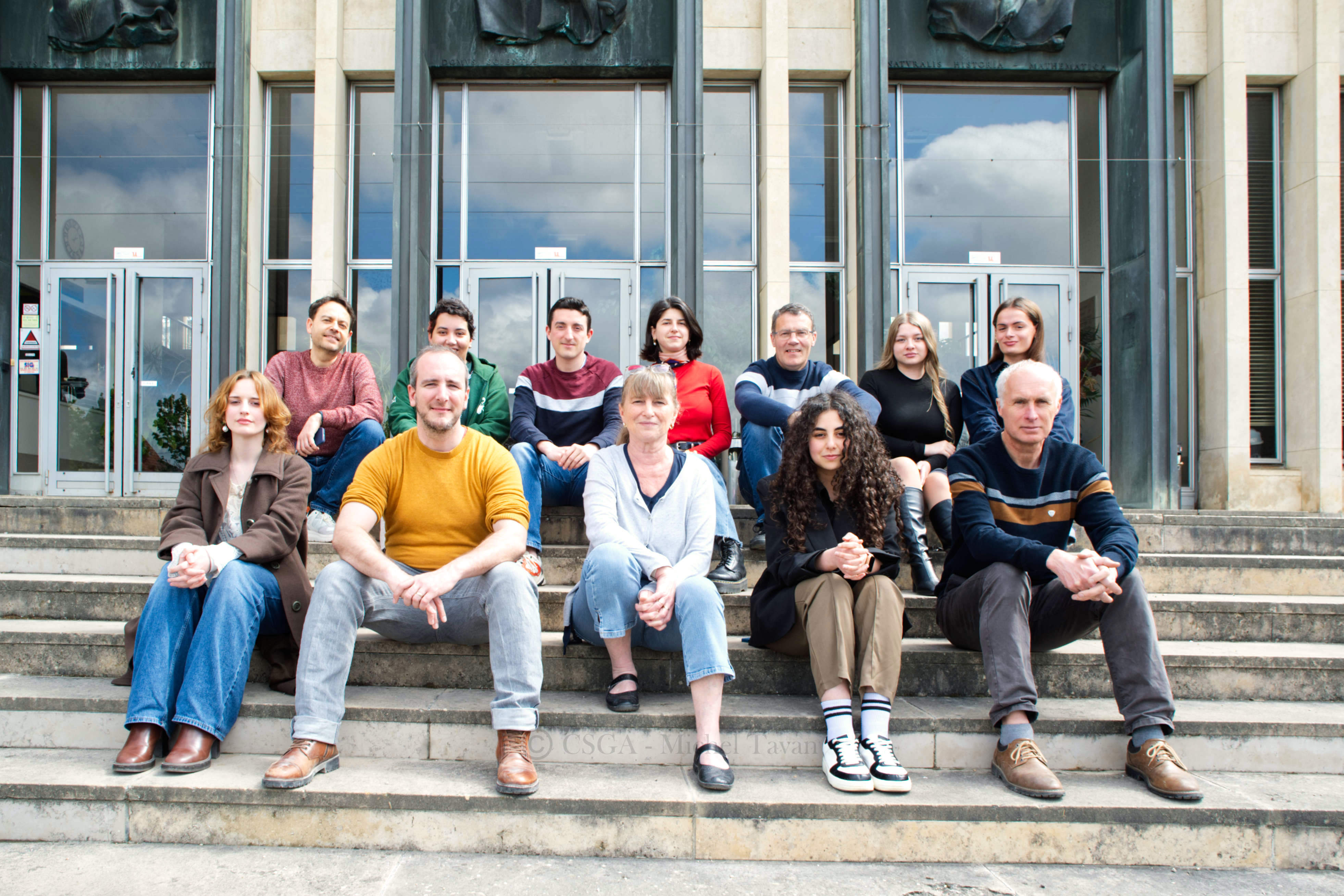Team GustaBrain
Gustation & Brain
Research
In the GustaBrain team, we are using the Drosophila melanogaster model to investigate how taste and post-ingestive information are integrated and how their uncoupling induces behavioral and neural plasticity.
Sweet taste perception and integration: One of our primary interest is to understand how flies interact with their environment and how taste is detected, integrated and translated into appropriate feeding behaviour. Here we aim at understanding the neural network involved in taste detection and feeding control by the use of the STROBE, a previously automated optogenetic device conceived in the GORDON Lab at the University of British Columbia (Musso et al., 2019).
Caloric post-ingestive integration: Taste sensing is not the only aspect of feeding regulation. Indeed, during a meal course, nutrients ingested are detected in the guts and in the brain by specific sensors which then, modulate the feeding sequence. During his postdoctorate in the the GORDON Lab, Pierre-Yves uncovered a new mechanism investigating how the satiating effect of glucose regulate the feeding-promoting effect of fructose (Musso et al., 2021). Surprisingly, the post-ingestive detection of nutrients is still poorly understood. Here we aim at identifying and characterizing new sensor detecting nutrients during food ingestion and integrate them in the complex frame of feeding regulation.
Sweet taste and caloric post-ingestive integration: Taste and post-ingestive nutrient detection are two mechanisms evaluating food quality. In fact, taste acts as a predictor of the incoming nutrient. As an example, sweet taste predicts energy. But, a growing number of food available displays an uncoupling between sweet taste and energy by the use of Non or Low-Caloric Sweeteners (NCS or LCS). In a previous study, Pierre-Yves demonstrated that flies devaluate the value associated to sweet taste following ingestion of non-caloric sugar (Musso et al., 2017). However, how taste devaluation impacts feeding behaviour as well as metabolism remains unclear. Here, we plan to tackle this question as well as identifying the neural substrate leading to this phenomenon.
Taste and immune response: During his postdoctoral fellow in the Tanentzapf Lab, Pierre-Yves discovered that the detection of cell-wall compounds from bacteria triggers an increase of the cellular immune response through an increased number of plasmatocytes. Thus confering higher survival chances following infection by a bacteria. Here, we are investigating the different aspects of the Taste Immunity Priming.
Key words
Team

Team leader
Pierre-Yves Musso (PhD), CNRS Researcher
Team members
Alumni
- Gabriel Balsamo Grazzioli, undergraduate student 2024
- Tresor Kemeni, undergraduate student 2025
- Audrey Momboisse, M2R SCM Dijon 2025
- Naziha Bouich, M2R Neurosciences Besançon 2025
- Mélysse Compte, BUT Dijon 2025
- Cassandre Touzé, M1 Toulouse 2025
- Olivia Lecuyer, M1 Toulouse 2025
Projects
Fundings
- ATIP-Avenir: 2024-2029
- Rsearch price of the Benjamin Delessert institute 2024
- Proof of concept Qualiment "Bagoûtpro" 2024
Representative publications
- Arntsen C, Grenon J, Chauvel I, Fraichard S, Dupas S, Cortot J, Audette K, Musso PY*, Stanley M* (2025). Artificial sweeteners differentially activate sweet and bitter gustatory neurons in Drosophila. biorXiv. *autors contributed equally. DOI: https://doi.org/10.1101/2025.02.06.636883
- Najera Mazariegos A, Manière G, Sillon L, Milleville R, Berthelot-Grosjean M, Aruçi E, Camp D, Alves G, Kaul R, Duval CJ, Chauvel I, Royet J, Grosjean Y, Musso PY*, Tanentzapf G*(2024). Detection of bacteria through taste receptors primes the cellular immune response. bioRxiv. *autors contributed equally. DOI: doi.org/10.1101/2024.09.26.615243
- Jellen Meghan, Musso PY, Junca P, Gordon MD (2023). Optogenetic induction of appetitive and aversive taste memories in Drosophila. ELife Sep 26:12:e81535. DOI: 10.7554/eLife.81535
- Musso PY, Junca P, Gordon MD (2021). A neural circuit linking two sugar sensors regulates satiety-dependent fructose drive in Drosophila. Science Advances Dec 3;7(49):eabj0186. DOI: 10.1126/sciadv.abj0186
- Muria A, Musso PY, Durrieu M, Ramon Portugal F, Ronsin B, Gordon MD, Jeanson R, Isabel (2021). Social facilitation of long-lasting memory is mediated by CO2 in Drosophila. Current Biology May 24;31(10):2065-2074.e5. DOI: 10.1016/j.cub.2021.02.044
- Musso PY, Junca P, Jelen M, Feldman-Kiss D, Zhang H, Chan RCW, Gordon MD (2019). Closed-loop optogenetic activation of peripheral or central neurons modulates feeding in freely moving Drosophila. Elife Jul 19;8:e45636. DOI: 10.7554/eLife.45636
- Jaeger AH, Stanley M, Weiss ZF, Musso PY, Chan RCW, Zhang H, Feldman-Kiss D, Gordon MD (2018). A complex peripheral code for salt taste in Drosophila. Elife Oct 11;7:e37167. DOI: 10.7554/eLife.37167
- Musso PY, Lampin-Saint-Amaux A, Tchenio P, Preat T (2017). Ingestion of artificial sweeteners leads to caloric frustration memory in Drosophila. Nature Communications Nov 27;8(1):1803. DOI: 10.1038/s41467-017-01989-0
- Musso PY, Tchénio P, Preat T (2015). Delayed Dopamine Signaling of Energy Level Builds Appetitive Long-Term Memory in Drosophila. Cell Reports Feb 24;10(7):1023-31. DOI: 10.1016/j.celrep.2015.01.036

